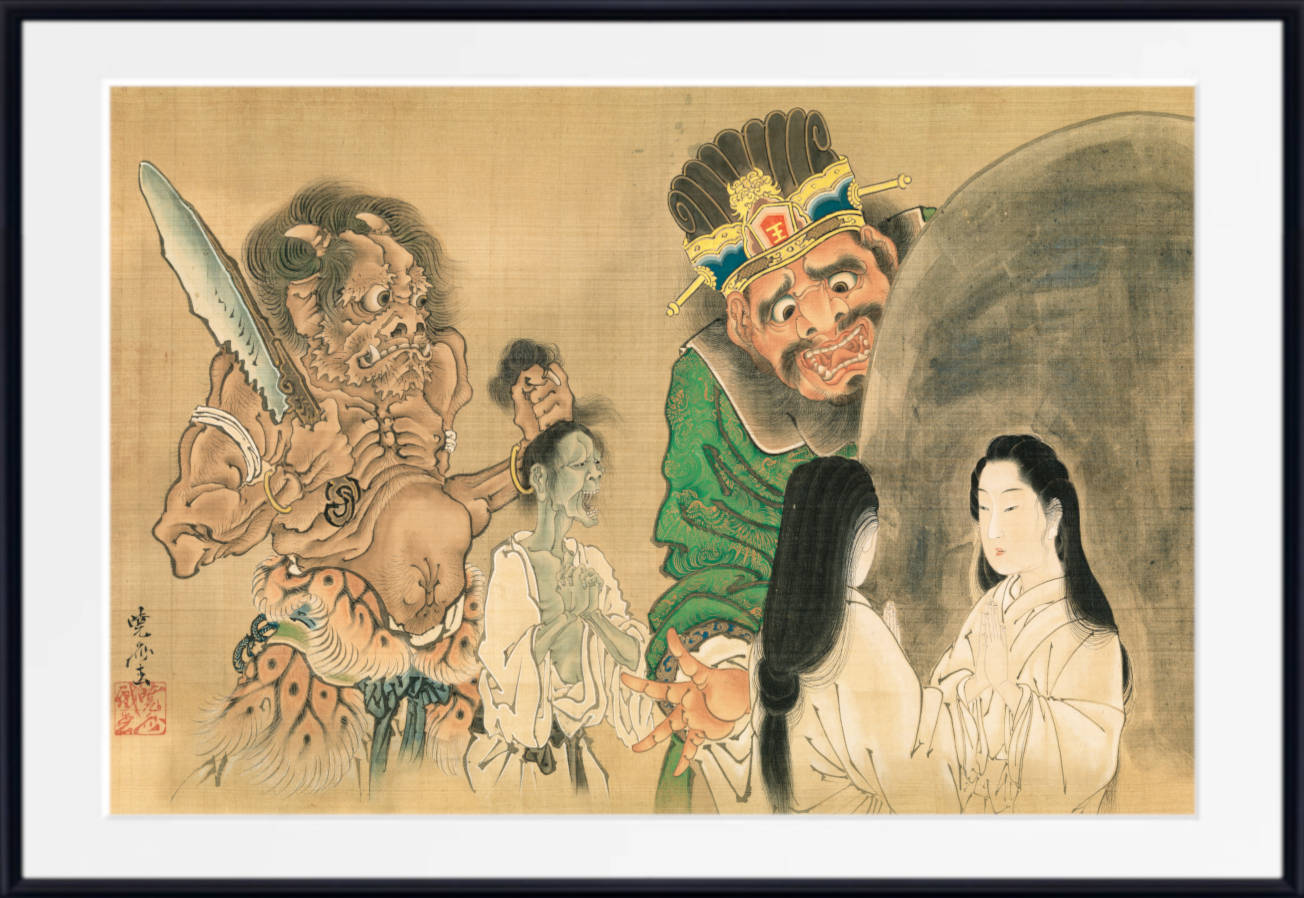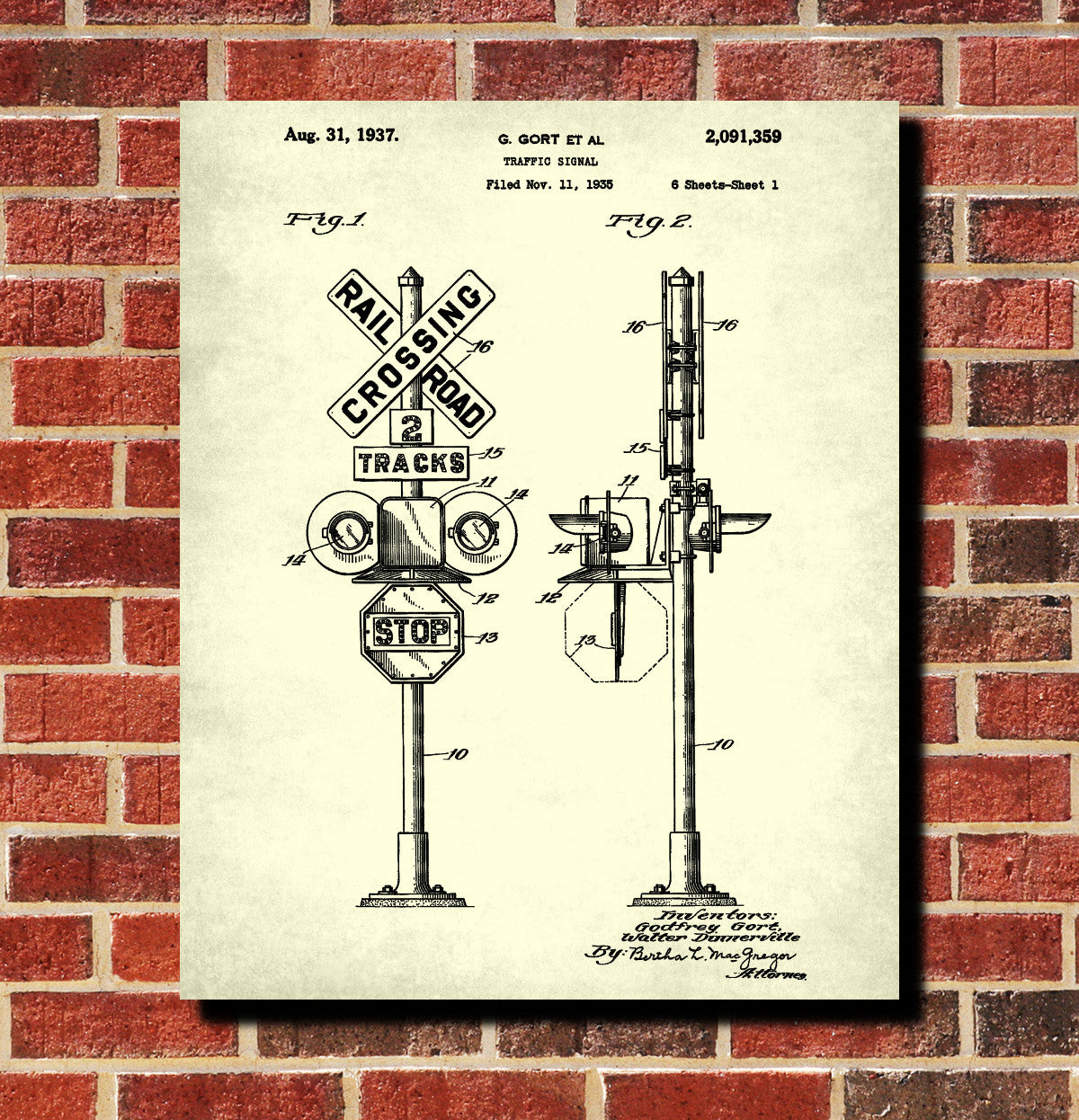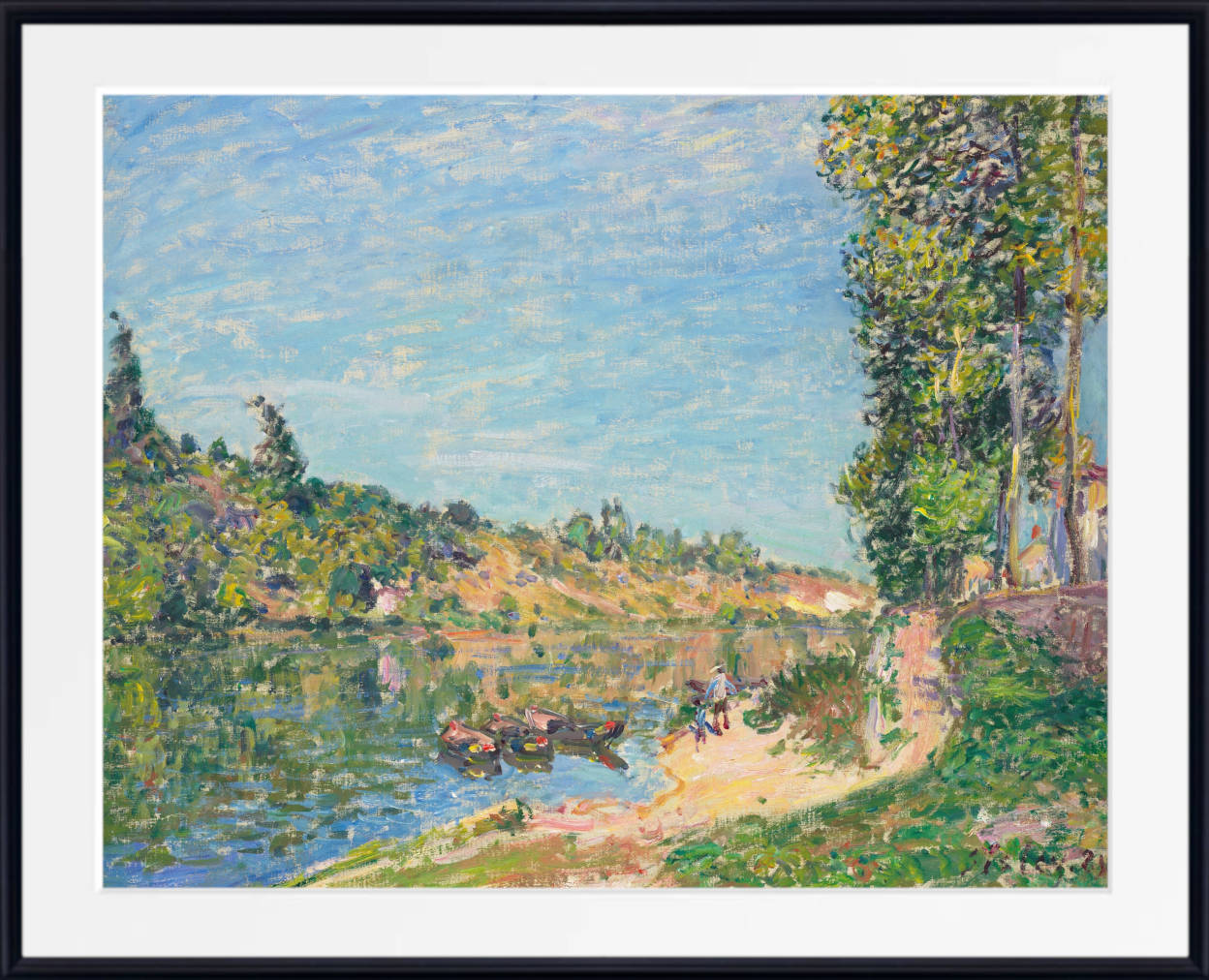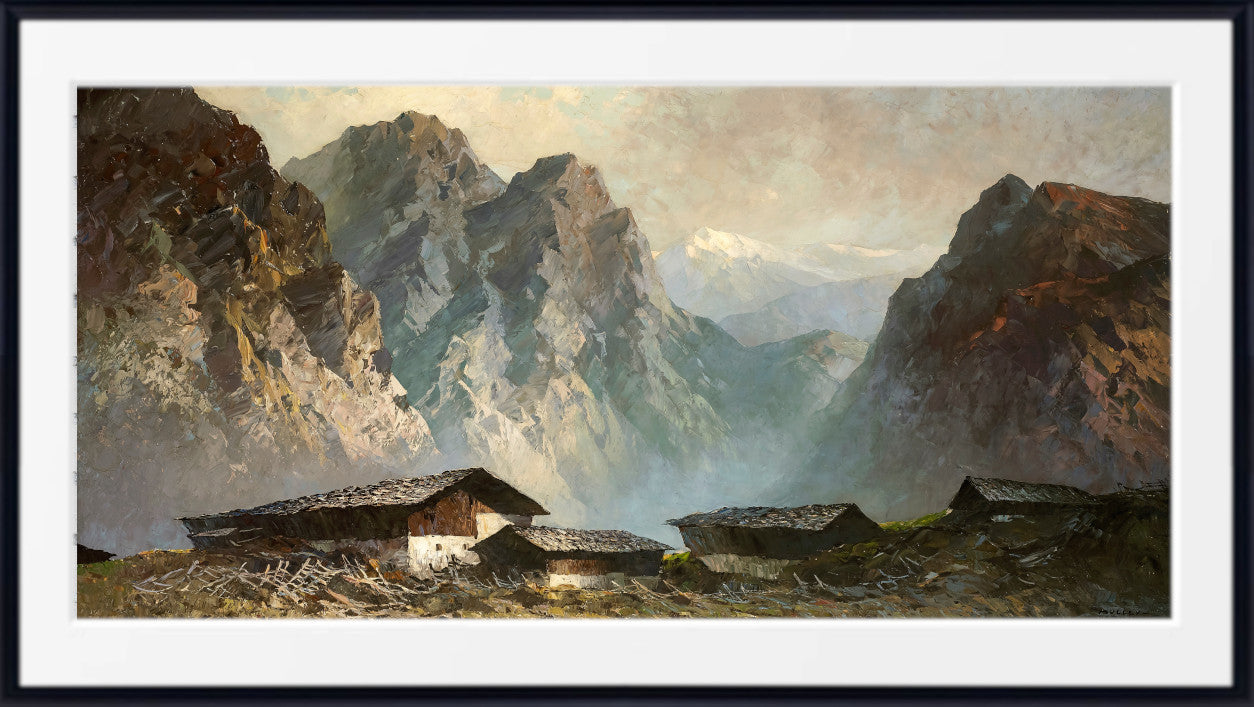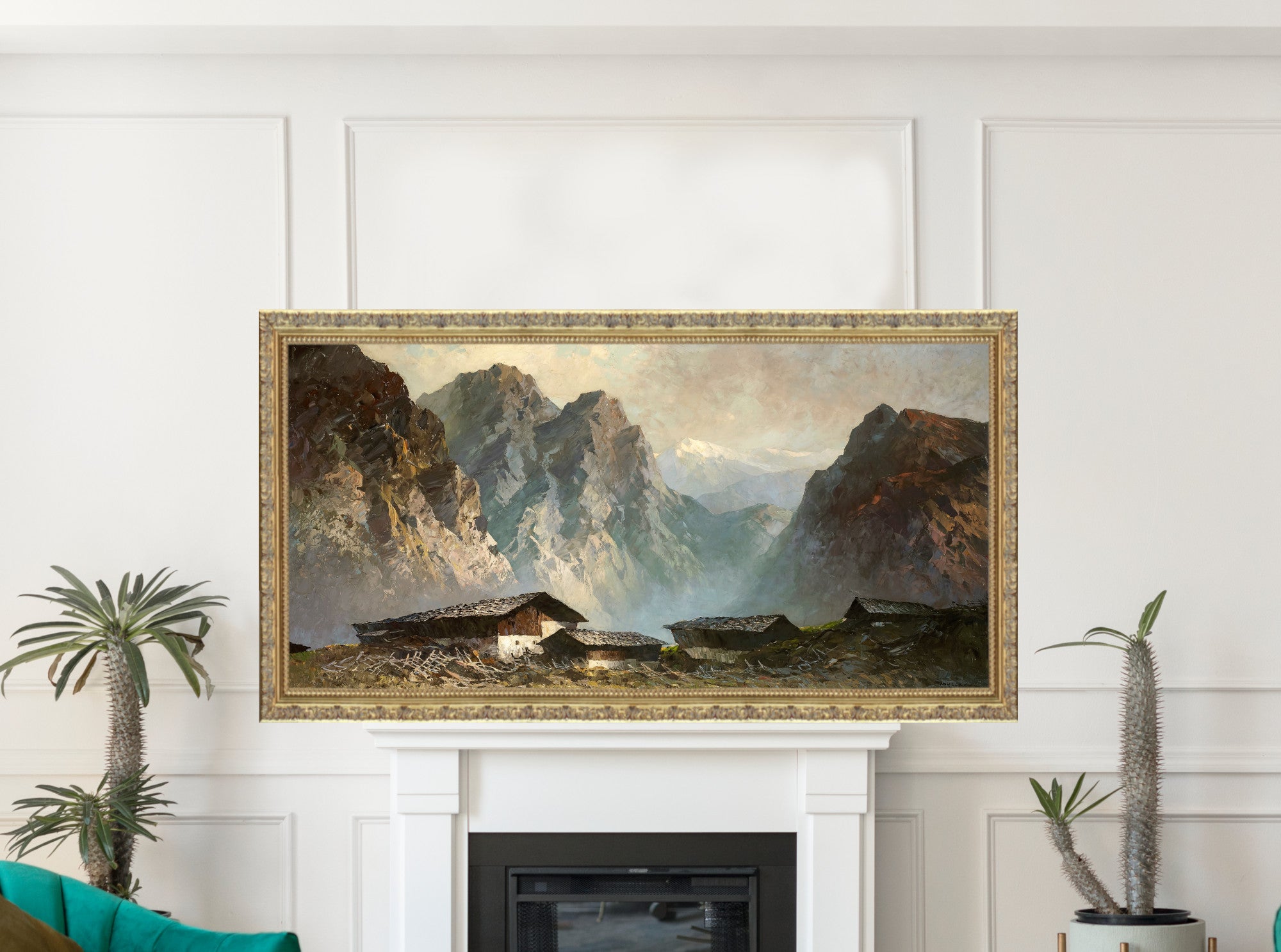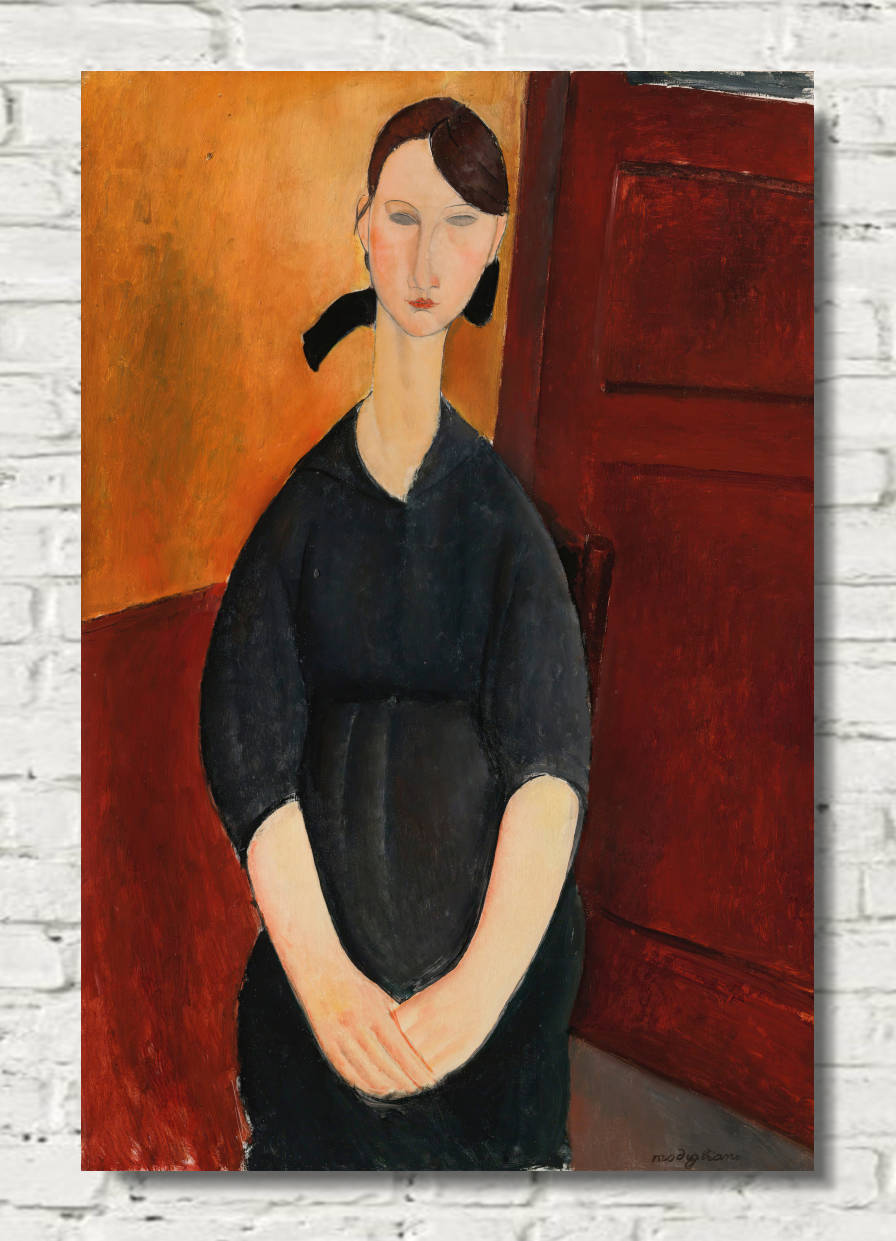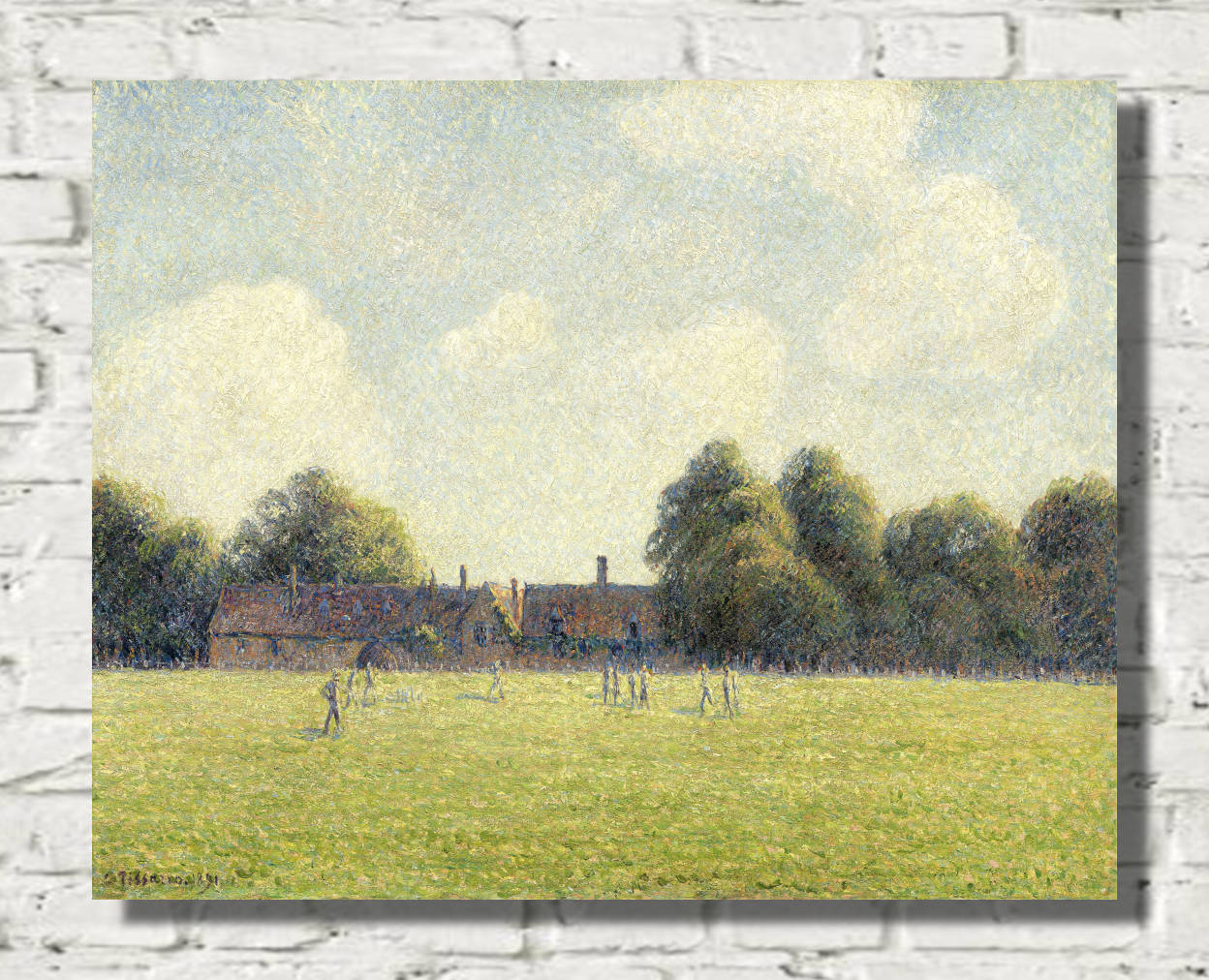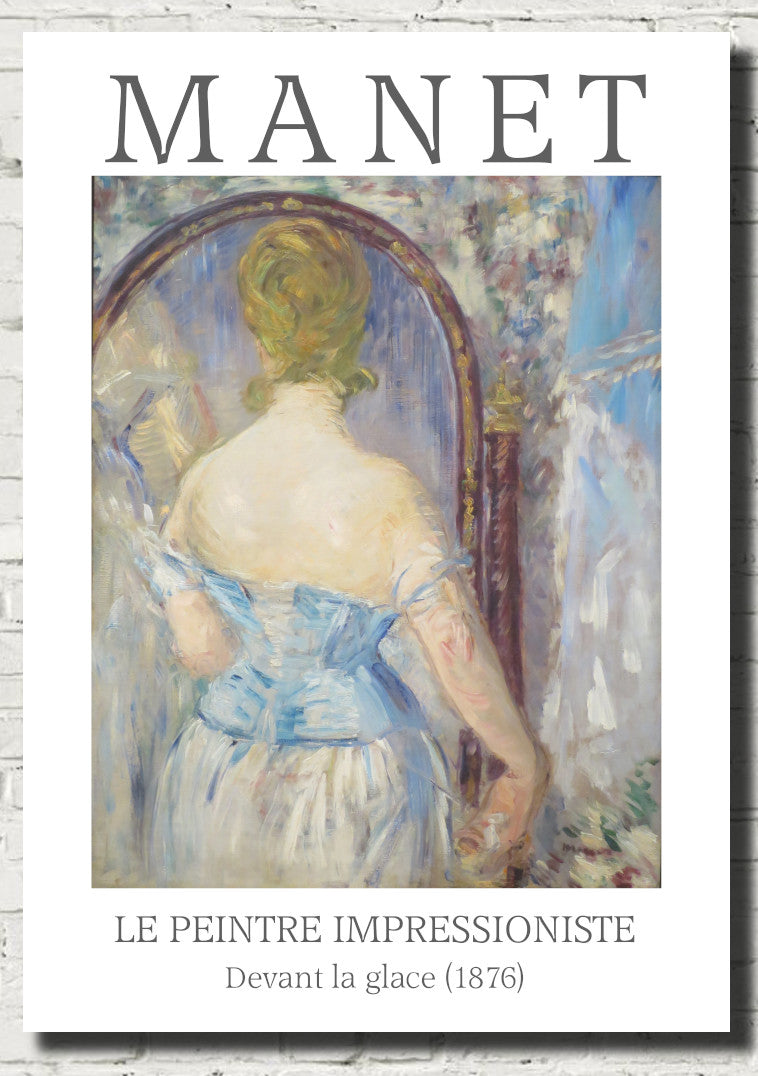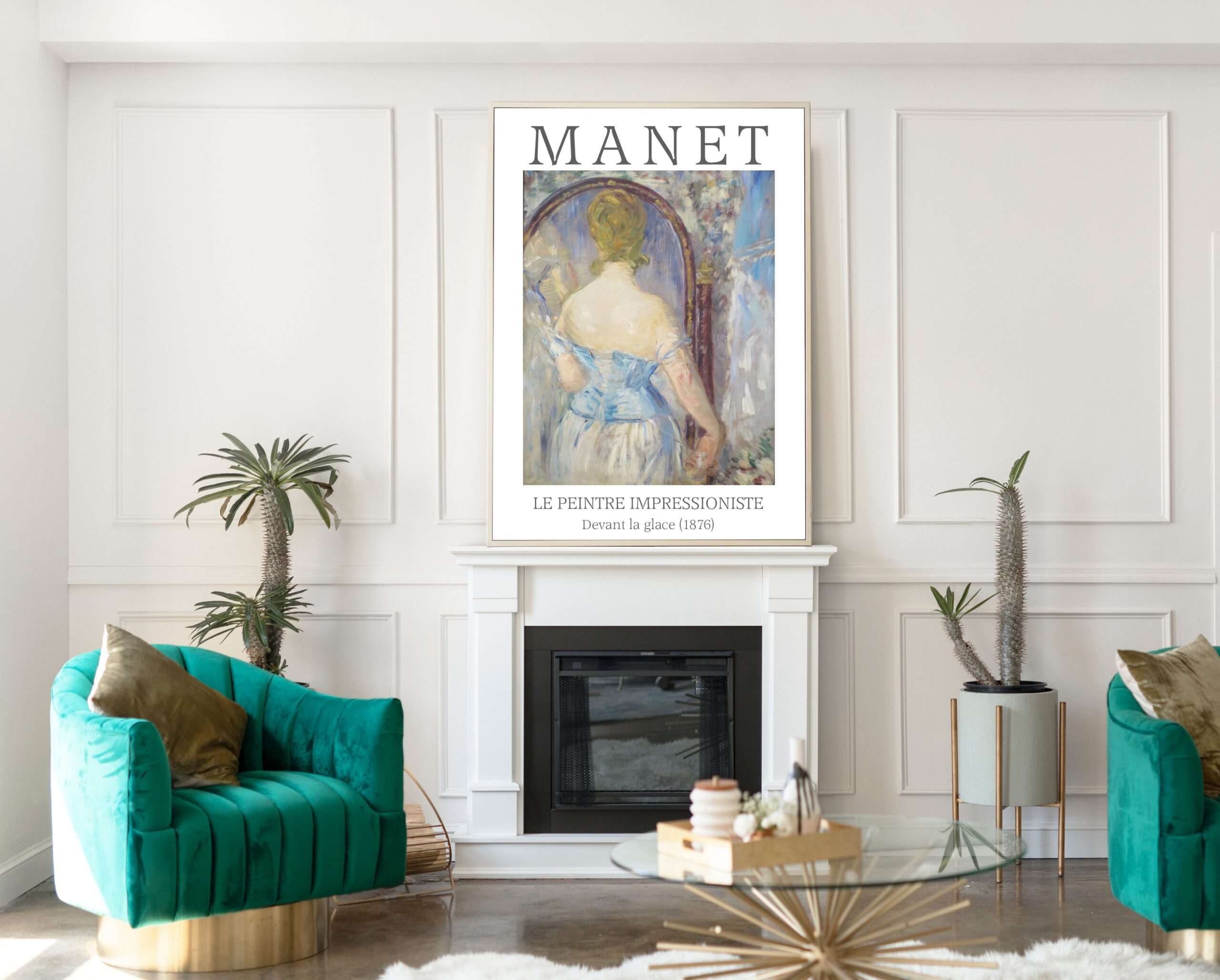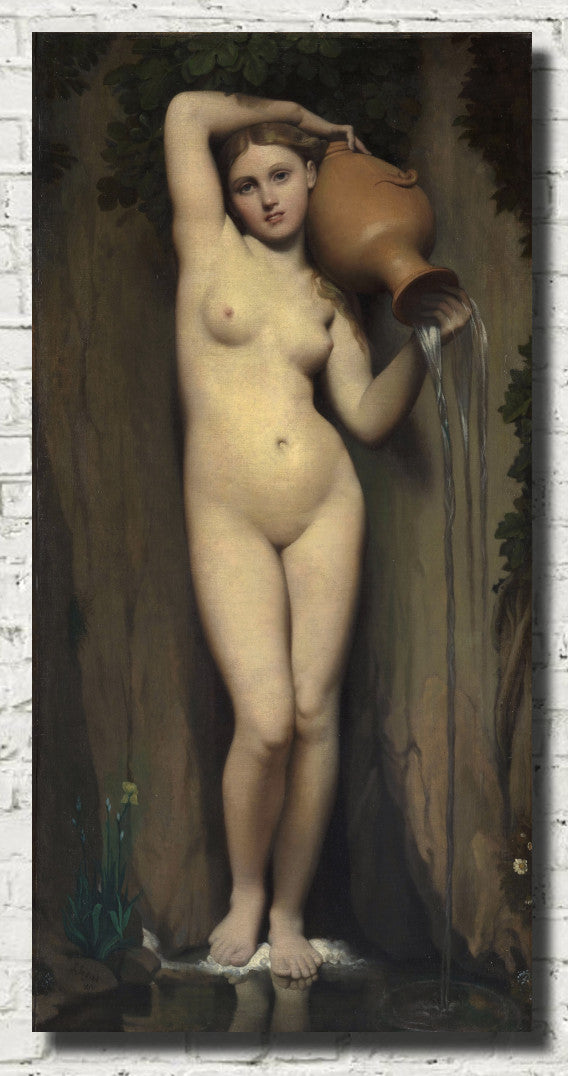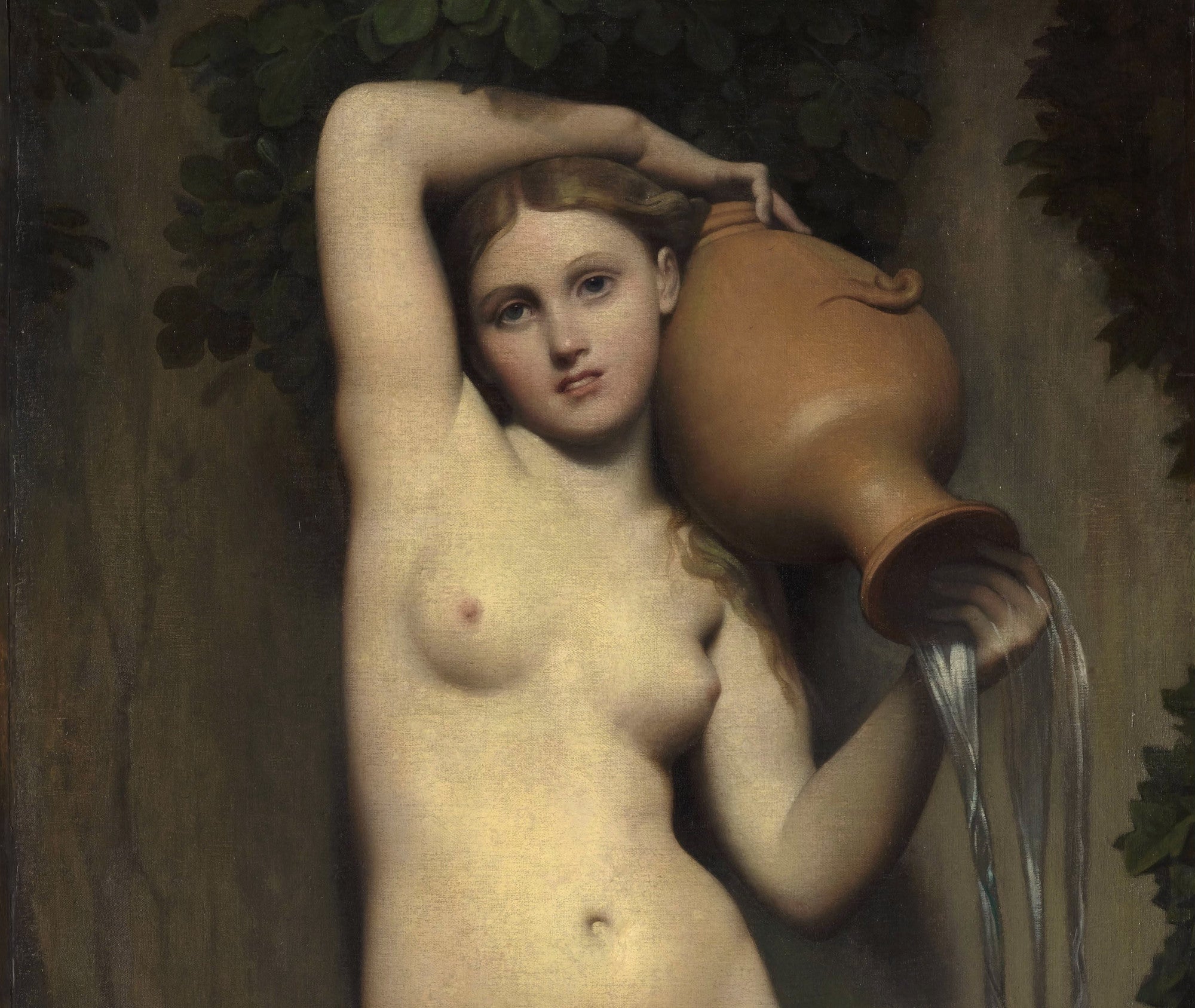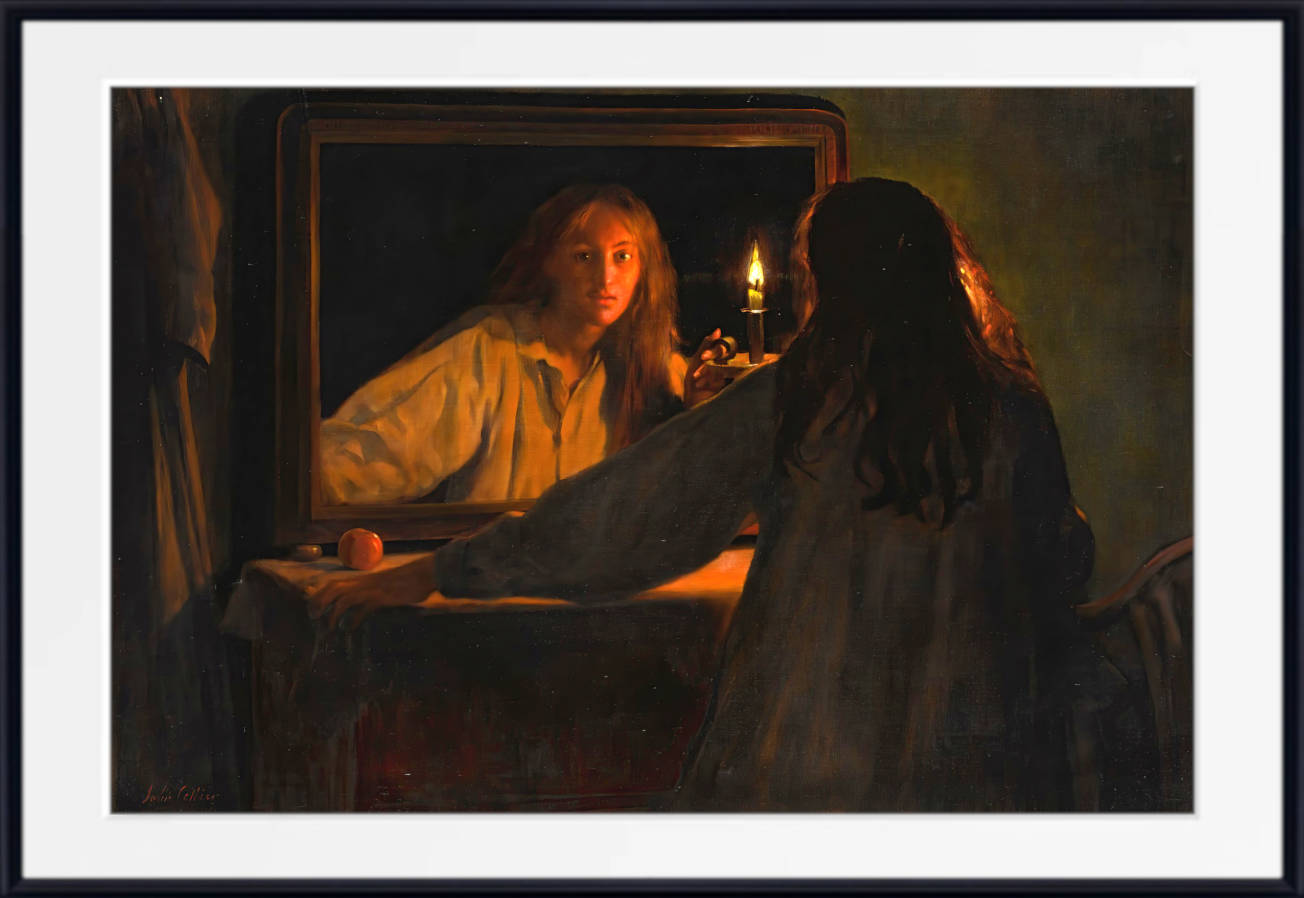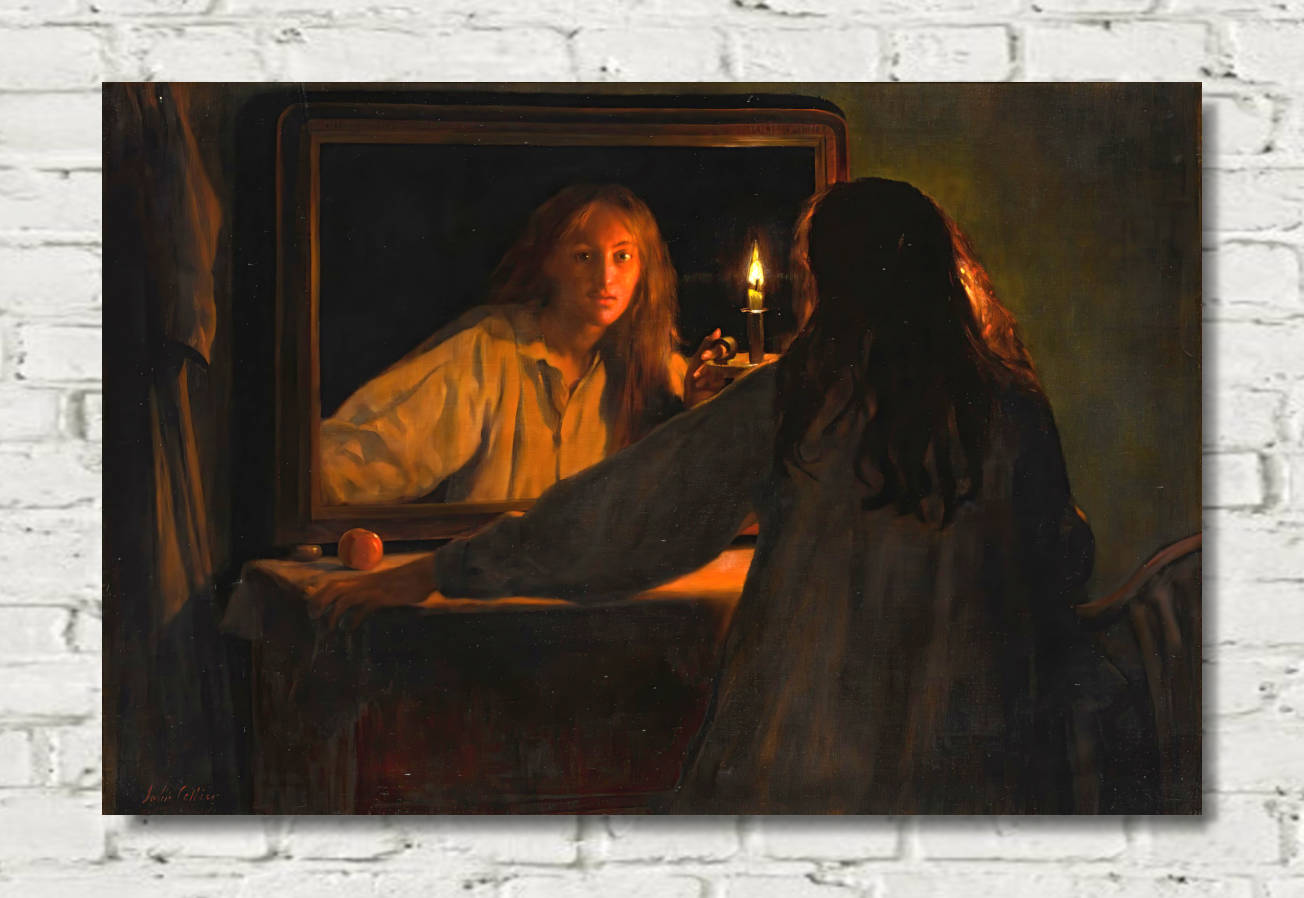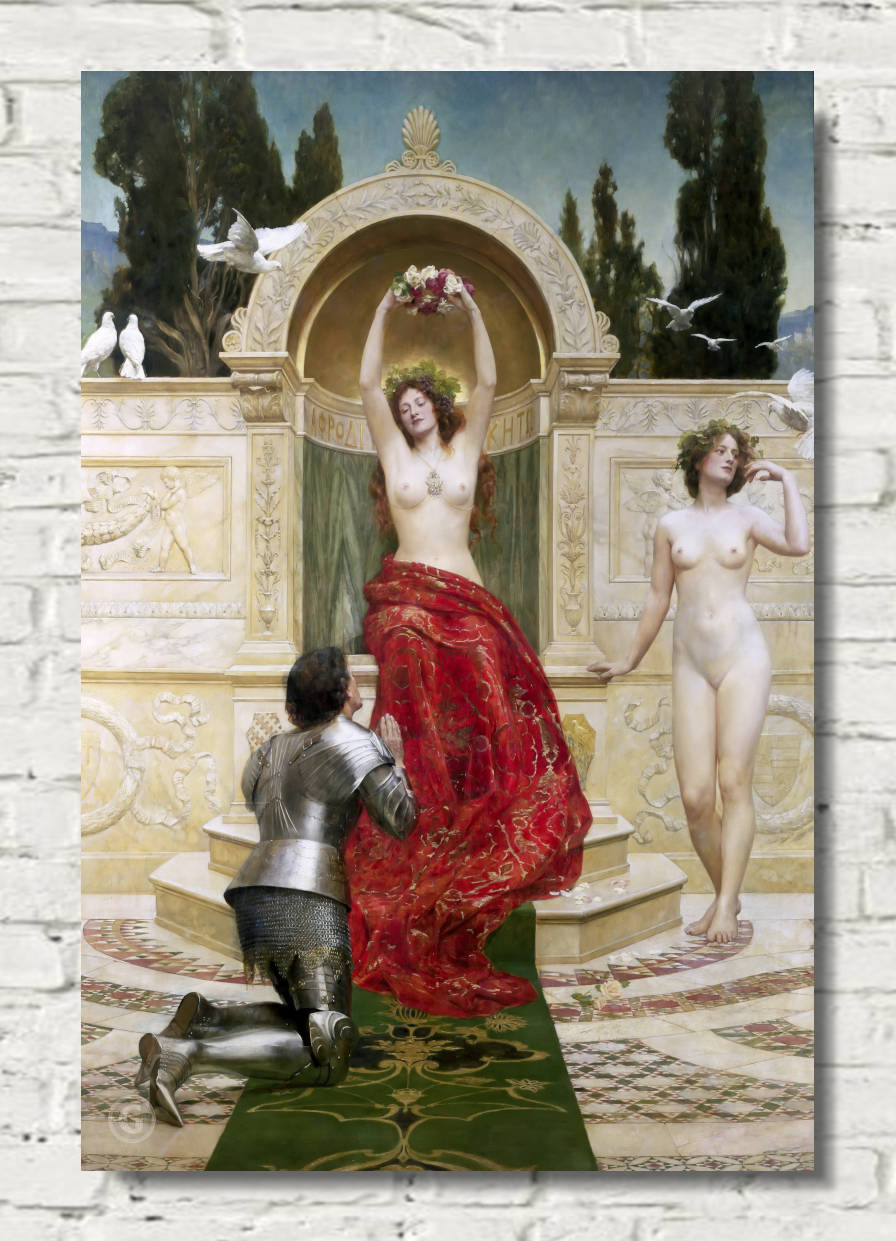Kawanabe Kyōsai print, A Beauty in Front of King Enma’s Mirror
Kawanabe Kyōsai print, A Beauty in Front of King Enma’s Mirror
A Beauty in Front of King Enma’s Mirror
A Beauty in Front of King Enma’s Mirror by Kawanabe Kyōsai is a striking and symbolic painting that intertwines beauty with the theme of moral judgment. The artwork depicts a beautiful woman standing before King Enma’s mirror, a mythological tool used by the ruler of the underworld in Japanese folklore to reveal the true nature of a person’s soul.
In the painting, the mirror reflects a grotesque skeleton instead of the woman’s outward beauty, symbolizing the inevitable decay of the human body and the contrast between physical appearance and inner morality. King Enma, often regarded as a stern judge of the dead, is present, overseeing the revelation, implying that all external beauty fades and that one’s true self will eventually be judged.
Kyōsai’s style, rooted in the ukiyo-e tradition, blends delicate, detailed brushwork with a powerful allegorical message. His choice of subject matter reflects his fascination with both the supernatural and moral themes, which were common in his works. The juxtaposition of the ethereal woman with the grim skeleton emphasizes the transient nature of life and beauty, while also inviting viewers to reflect on the importance of inner virtue over external appearances.
Kawanabe Kyōsai – The Artist
Living through the Edo period to the Meiji period, Kyōsai witnessed Japan transform itself from a feudal country into a modern state. Born at Koga, he was the son of a samurai. His first aesthetic shock was at the age of nine when he picked up a human head apart from a corpse in the Kanda river. After working for a short time as a boy with Utagawa Kuniyoshi, he received his artistic training in the Kanō school, but soon abandoned the formal traditions for the greater freedom of the popular school. During the political ferment which produced and followed the revolution of 1867, Kyōsai attained a reputation as a caricaturist. His very long painting on makimono “The battle of the farts” may be seen as a caricature of this ferment. He was arrested three times and imprisoned by the authorities of the shogunate. Soon after the assumption of effective power by the Emperor, a great congress of painters and men of letters was held at which Kyōsai was present. He again expressed his opinion of the new movement in a caricature, which had a great popular success, but also brought him into the hands of the police this time of the opposite party.
Kyōsai is considered by many to be the greatest successor of Hokusai (of whom, however, he was not a pupil), as well as the first political caricaturist of Japan. His work mirrored his life in its wild and undisciplined nature, and occasionally reflected his love of drink. Although he did not possess Hokusai’s dignity, power or reticence, he compensated with a fantastic exuberance, which always lent interest to his technically excellent draughtsmanship.
He created what is considered to be the first manga magazine in 1874: Eshinbun Nipponchi, with Kanagaki Robun. The magazine was heavily influenced by Japan Punch, founded in 1862 by Charles Wirgman, a British cartoonist. Eshinbun Nipponchi had a very simple style of drawings and did not become popular with many people, and ended after just three issues.
In addition to his caricatures, Kyōsai painted a large number of pictures and sketches, often choosing subjects from the folklore of his country, Nô drama, nature and religion, for example The Temptation of Shaka Niorai or The goddess Kwannon on a dragon (on kakejiku frame) A fine collection of these works is preserved in the British Museum; and there are also good examples in the National Art Library at South Kensington and the Guimet Museum at Paris. The Kawanabe Kyōsai Memorial Museum was established in 1977, located at Warabi, Saitama Prefecture, Japan.
And as a stretched canvas panel (heavy fine art canvas stretched over 1.5 inch deep edge solid wood frame)
All prints are made using archival art stocks and UV pigment inks to give up to 200 years life. Prints are sold unframed and unmounted.

